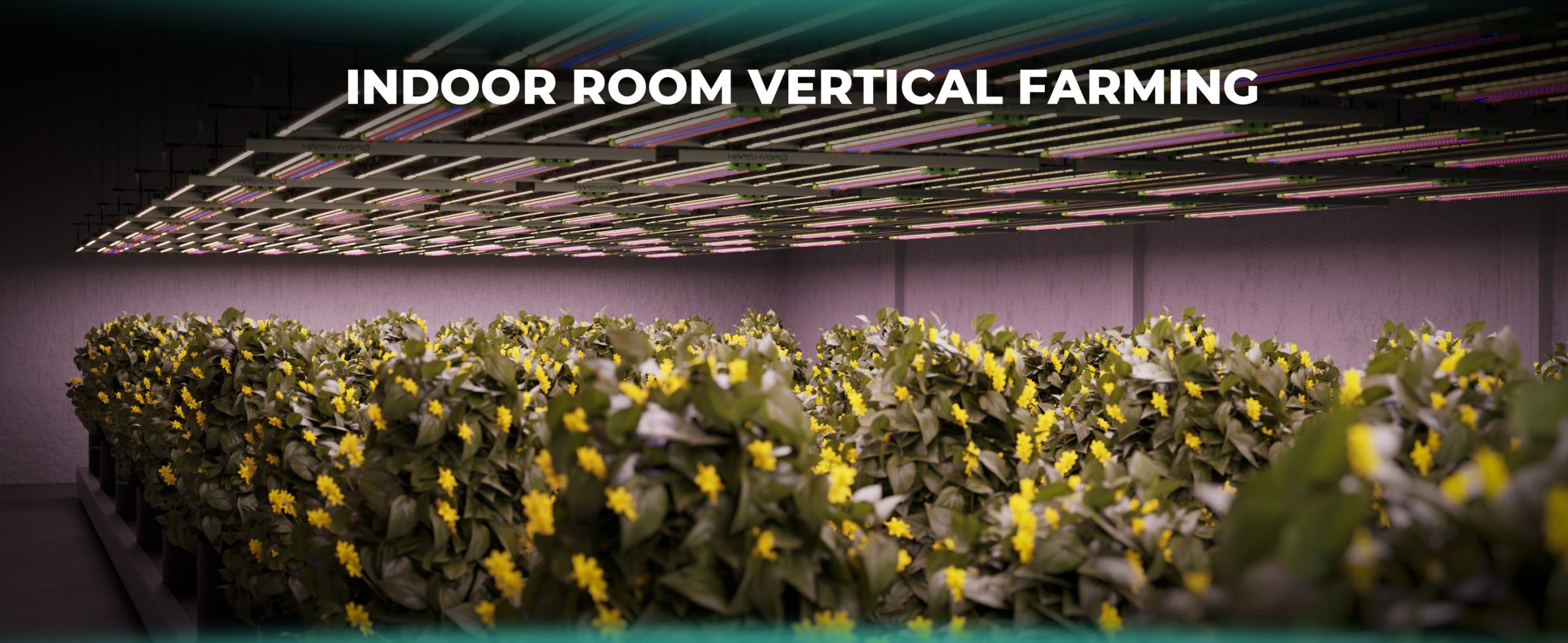Are you struggling with recurring plant diseases and disappointing yields in your indoor garden? Wondering what's impacting the health and productivity of your plants despite your best efforts? Understanding the root causes and implementing effective solutions are essential for cultivating a thriving indoor garden. Let's explore the common issues faced by indoor gardeners and how advanced solutions can lead to healthier plants and improved yields.
Identifying Stress Signs in Indoor Gardens
Indoor gardening allows for control over environmental conditions, but it also presents unique challenges such as susceptibility to plant diseases and suboptimal yields. These problems can significantly reduce both the economic value and personal enjoyment of your indoor gardening efforts. The spread of plant diseases is often aggravated by inadequate management of critical environmental factors like light, soil moisture, and temperature.
Have you noticed signs of distress in your indoor garden? Perhaps your plants have elongated, spindly stems that stretch toward any available light source, a sign they are desperately seeking nourishment. This condition, known as etiolation, usually results in weak stems that are prone to bending or breaking under their own weight.
You may also see leaves turning a pale yellow, an issue known as chlorosis, which indicates a deficiency in essential nutrients or a lack of photosynthetic activity. This discoloration might affect both old and new leaves and could lead to premature leaf drop, where leaves fall from the plant sooner than they should.
Flowering can be sparse too, with fewer blooms than expected. Under less-than-ideal conditions, the few flowers that do appear might wilt quickly or not develop into healthy fruits. The fruits and vegetables that do grow may be small, poorly formed, and lacking the rich flavor, color, and quality you desire. They might appear misshapen, have blemishes, or exhibit signs of uneven ripening.
If your plants look generally stunted, with limited leaf growth and diminished vigor, it’s a definite indicator that they're not thriving under the current conditions. These symptoms not only mar the lush appearance of your garden but also affect its overall productivity and economic viability. Recognizing these signs early is crucial as it allows for timely interventions that can rejuvenate your garden and restore its health and vitality.
Understanding Challenges in Indoor Gardening
To address the challenges of indoor gardening effectively, it's crucial to grasp the underlying causes. The main difficulties stem from limited light exposure, inconsistent soil moisture, and variable temperature conditions—crucial elements for plant health that are often compromised indoors.
Inadequate light is particularly harmful. Light drives photosynthesis, the process by which plants convert light energy into chemical energy, essential for their growth and survival. During photosynthesis, chlorophyll absorbs light, utilizing this energy to transform carbon dioxide and water into sugars that fuel growth.
When plants lack sufficient light, photosynthesis is severely hindered, leading to inadequate energy production. This manifests as stunted growth, as plants don't produce enough sugars to develop new stems and leaves. Flowers may appear in reduced numbers, be poorly formed, or fail to bloom at all, resulting in decreased fruit development.
Insufficient lighting also affects the quality of the produce. Fruits and vegetables may be smaller, with less intense flavors and colors than those grown under ideal conditions. Moreover, low light can cause plants to stretch weakly towards the light, leading to frail, spindly growth.
Consistent light exposure is vital. It significantly affects plants’ food production capabilities and their ability to withstand stress and disease. If not properly managed, poor lighting can drastically reduce the overall health and productivity of your garden, leading to disappointing harvests.
Ensuring adequate, consistent lighting is essential for optimal plant growth, flowering, and fruiting. By maintaining proper lighting conditions, you protect the health and productivity of your indoor garden, fostering a prosperous and sustainable growing environment.
Optimizing Growth with Adlite Supplemental Lights
Indoor gardening introduces unique challenges, especially in terms of plant health and productivity. To counter these, Mars Hydro introduces the Adlite Series, equipped with UV, IR, and deep red lights that replicate beneficial natural sunlight features.
Enhancing Photosynthesis
While UV light doesn't directly participate in photosynthesis, its role is significant. UV-A light helps synthesize vital pigments and antioxidants, enhancing photosynthesis and overall plant health. Controlled UV-A exposure from Adlite lights strengthens plants’ defenses, promoting robust growth.
IR light is crucial for maintaining optimal photosynthesis temperatures, aiding in growth and development, especially in cooler climates. It keeps leaf temperatures ideal, facilitating vigorous growth.
Deep red light targets chlorophyll’s peak absorption spectrum, enhancing photosynthetic efficiency and supporting strong plant growth. It is particularly beneficial for boosting flowering and fruit production.
Stimulating Secondary Metabolite Production
UV and IR lights are pivotal in enhancing plant resilience through secondary metabolite production. They activate biochemical pathways that lead to the synthesis of compounds critical for plant protection.
UV light promotes antioxidants like polyphenols and carotenoids, protecting cells from damage and enhancing the medicinal properties of certain plants. IR light raises internal cellular temperatures, boosting enzyme activity and metabolite production, helping plants adapt to environmental changes.
Improving Yield and Quality
Incorporating UV, IR, and deep red light can markedly enhance yield and quality. Adlite lights provide a consistent spectrum that mimics natural sunlight, promoting diverse crop development:
Nutritional Enhancement: UV light activates pathways that increase vitamin and antioxidant levels, improving crop nutrition.
Flavor and Sugar Content: IR light boosts sugar production, enhancing the sweetness and flavor of fruits.
Yield Increase: IR light enhances biochemical processes, potentially reducing harvest time and improving growth rates, while deep red light optimizes flowering and fruiting stages.
With Adlite supplemental lights, consistent lighting ensures optimal conditions, significantly mitigating indoor gardening risks. This leads to a thriving garden with enhanced photosynthesis, resilient plants, and high-quality yields.
Conclusion
Using Adlite series grow lights strategically in your indoor garden not only counteracts the risks associated with inadequate environmental control but also boosts the economic and aesthetic value of your efforts. This approach ensures high-quality yields and sustainable plant cultivation, empowering your indoor garden to flourish under any conditions and turning potential challenges into definite successes.




